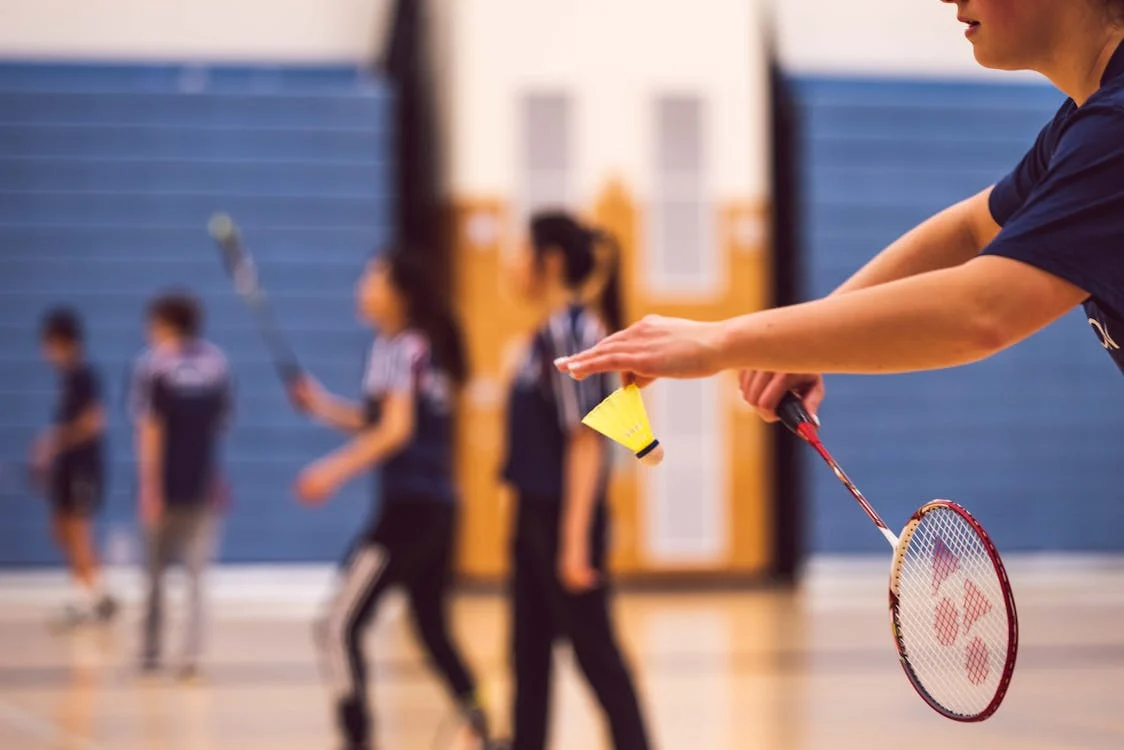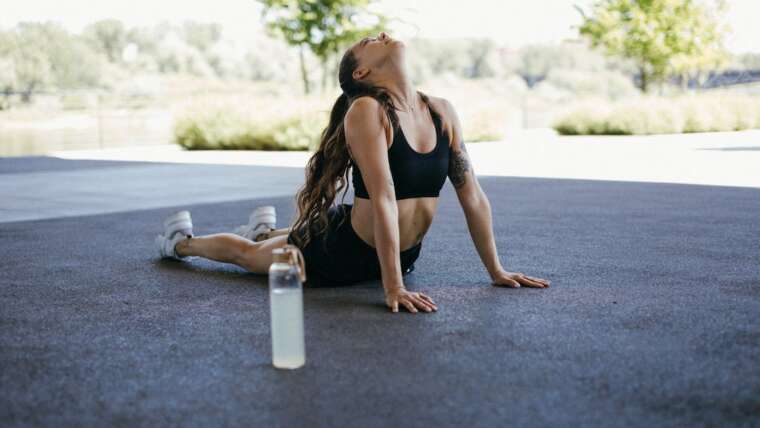Do you often find yourself standing at the baseline, pondering which serve to go with while facing your opponent?
Do you dream of baffling them with a deceptive flick or leaving them scrambling with a lightning-fast drive?
Well, get ready to up your serve game.
Have you ever wondered about the different types of badminton serves and how they can add excitement to your matches?
Are you itching to learn new techniques that will keep your opponents on their toes and give you the edge on the court?
If so, you’ll love this blog on types of badminton serves, where you can discover the secrets to serving like a champ:
Related: Types of badminton smashes
Types Of Badminton Serves
Eager to know about the different types of badminton serves to up your game? Here are the most renowned ones:
1. High Serve
The high serve is a basic serve where the shuttlecock is hit high into the air, usually towards the back of the court.
It’s commonly used to start a rally or to regain control of the game. This serve is ideal when you want to give yourself time to get into position after serving.
When to Use
Use the high serve when you’re under pressure or want to reset the game. It’s also handy for serving opponents who are positioned deeper in the court.
Tips
Focus on a high contact point, use a relaxed grip, and aim to hit the shuttlecock cleanly in the center. Also, try to vary the placement and trajectory of your high serves to keep your opponent guessing.
2. Flick Serve
The flick serve is a deceptive serve where the shuttlecock is hit with a quick wrist flick, sending it over the opponent’s head and landing near the back of the court.
It’s used to catch opponents off guard and force them to move quickly.
When to Use
Employ the flick serve when your opponent is expecting a short serve or when they’re positioned close to the net, as it can surprise them and disrupt their rhythm.
Tips
Practice generating power with your wrist flick while maintaining control. Focus on timing and disguising your flick serve to make it harder for your opponent to anticipate.
3. Low Serve (Short Serve)
The low serve, also known as the short serve, involves hitting the shuttlecock low over the net, landing it close to the opponent’s service line.
It’s used to keep the opponent from attacking and to maintain control of the rally.
When to Use
Opt for the low serve when you want to keep the shuttlecock close to the net and force your opponent to play a tight return. It’s effective against opponents who struggle with low shots.
Tips
Keep your racket head steady and focus on a smooth, controlled swing. Aim to hit the shuttlecock just over the net and close to the service line.
Practice varying the speed and placement of your low serves to keep your opponent guessing.
4. Drive Serve
The drive serve is a powerful type of badminton serve where the shuttlecock is hit with speed and minimal height, aimed towards the opponent’s midcourt or backcourt.
It’s used to put pressure on the opponent and gain an advantage in the rally.
When to Use
Use the drive serve when you want to take control of the rally early on or when your opponent is positioned deep in the court. It’s also effective against opponents who struggle with fast-paced shots.
Tips
Focus on generating power with your wrist and forearm while maintaining accuracy. Keep the shuttlecock low and flat over the net to make it harder for your opponent to return.
Practice varying the placement and angle of your drive serves to keep your opponent off balance.
5. Spin Serve
The spin serve involves imparting spin on the shuttlecock, causing it to curve or dip unpredictably in the air.
It’s used to add variation to your serves and make it harder for the opponent to anticipate the flight of the shuttlecock.
When to Use
Employ the spin serve as a surprise tactic to catch your opponent off guard. It’s effective when you want to disrupt your opponent’s timing and control the pace of the game.
Tips
Experiment with different types of spin, such as topspin or sidespin, to see which works best for you. Focus on clean contact with the shuttlecock and use your wrist to generate spin.
Practice controlling the spin to ensure consistency in your serves.
Final Verdict
From the classic low serve to the tricky flick serve, each type offers its own set of challenges and rewards.
By practicing these different techniques, you’ll not only keep your opponents guessing but also elevate your game to new heights.
So, the next time you step onto the court, don’t be afraid to mix it up.
Who knows? You might just serve your way to victory.
How about an added tip? Get your badminton gripping technique sorted before mastering these serve types.




